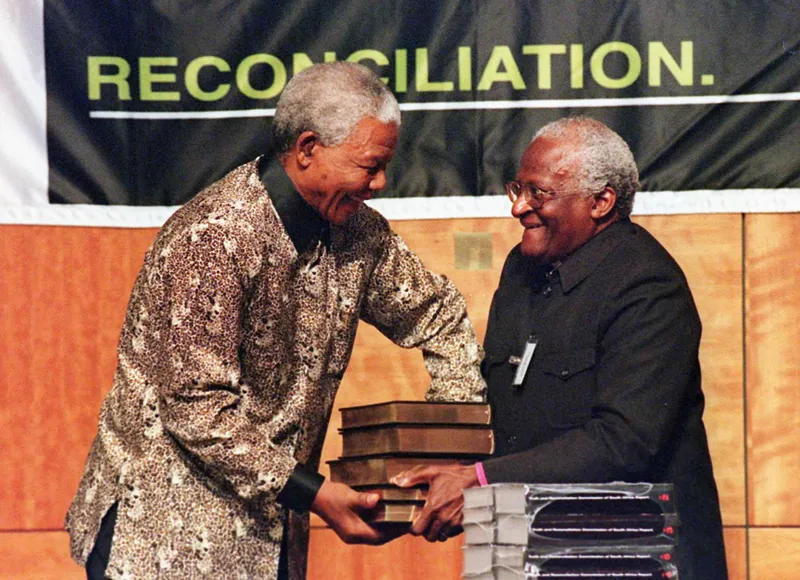Remembering Titus Mafolo: A Tribute to an Afrocentric Visionary and Selfless Cadre
The late Titus Mafolo's Afrocentric perspective, coupled with his background as a political activist, placed emphasis on African agency. Always ready for an ANC ...
The Erosion of Human Rights: A 2025 Perspective
Explore the alarming trends in human rights violations and the weakening of multilateralism in 2025. Paulo César Carbonari delves into the implications of these ...
Inter-Congolese Dialogue the Key to Lasting Peace in the DRC
Following the recent signing of the Washington Peace Accord between the DRC and Rwanda, questions arise about its potential to bring lasting peace amid renewed violence ...
ANC’s Survival Hangs By A Thread Despite NGC’s Unity Plea
The expectation that the ANC has to conclude its transformation from a liberation movement to a modern parliamentary political party remains unmet. The NGC 2025 ...
SA's National Reconciliation Journey Littered with Resistance
For reconciliation to be a reality, all racial groups must not only state their willingness to reconcile. Instead, they must actively work towards reconciliation, ...
Silencing Africa's Guns Remains A Dream Deferred
The guns in Africa are far from being silenced. Instead, they are getting louder and shriller. The African Union's 'Silencing the Guns' initiative is horribly off ...
Whistleblower Protection is Vital for the Building of an Ethical Democracy
The courage of whistleblowers serves the public interest and upholds democratic accountability. Strengthening whistleblower protection is an essential step towards ...
ANC's Struggle for Survival Amid Leadership Crisis, Voter Discontent
The NGC takes place at a time when the relations between the ANC and the SACP are at their lowest. This is of the ANC’s own making. Instead of cementing its historic ...
Afrikaner Theatrics Underscores the Fragility of National Reconciliation
The country must be anchored on a singular principle, that socio-economic justice is the moral and political foundation upon which a durable and inclusive South ...
The ANC's Leadership Crisis: A Barrier to the Party's Organisational Renewal
The ANC and South Africa can no longer afford rhetorical renewal or symbolic reshuffles. Only decisive, collective resignation of the NEC can open the path to genuine ...
Beyond Barrels: India and Russia Build A New Energy Playbook
India and Russia are co-creating a clean-power future that strengthens industrial sovereignty, says the writer.
Unity Will Strengthen Africa's Case for Permanent UNSC Seats
For Africa to succeed in its quest for a permanent place on the UNSC, the continent must first fix its fragmented unity and invest in strategic diplomacy, and then ...
Emulating Mandela's Ethical Leadership A Bridge Too Far for SA's Political Class
As South Africa marks the 12th anniversary of Nelson Mandela's passing, Prof. Bheki Mngomezulu critically examines the ANC's performance and its failure to uphold ...
Regaining Relevance, Moral Authority a Tall Order for Beleaguered ANC
If the ANC is to regain its relevance and moral authority, it must close the gap between its commitments and its actions, affirm the primacy of its primary constituency, ...
Silencing the Guns: Guinea-Bissau Coup Highlights Africa's Governance Crisis
The recent coup in Guinea-Bissau is a stark reminder of Africa's ongoing struggle with democratic fragility, says the writer.
Adapting Policy Framework in an Era of Coalitions a Strategic Imperative for ANC
At the heart of the NGC lies the question of organisational renewal: not as a slogan repeated at conferences, but as a substantive programme that must address degraded ...
Failing to Advance Working-Class Interests a Dark Stain on Cosatu’s Legacy
Cosatu still has structures and networks that can regroup the working class. It requires a clear return to solidarity, active involvement in mass action, and firm ...
The G20 Dilemma: South Africa, Trump, and the Future of Multilateralism
South Africa's exclusion from the 2026 G20 Summit is no longer about upstaging Donald Trump. It is about the future of the G20, the role of host nations, and the ...
Can anyone end the Ukraine war if Kiev refuses every compromise?
Alexander Bobrov explores the complexities of Donald Trump's peace plan for Ukraine, examining its implications for global security and the challenges it faces from ...
